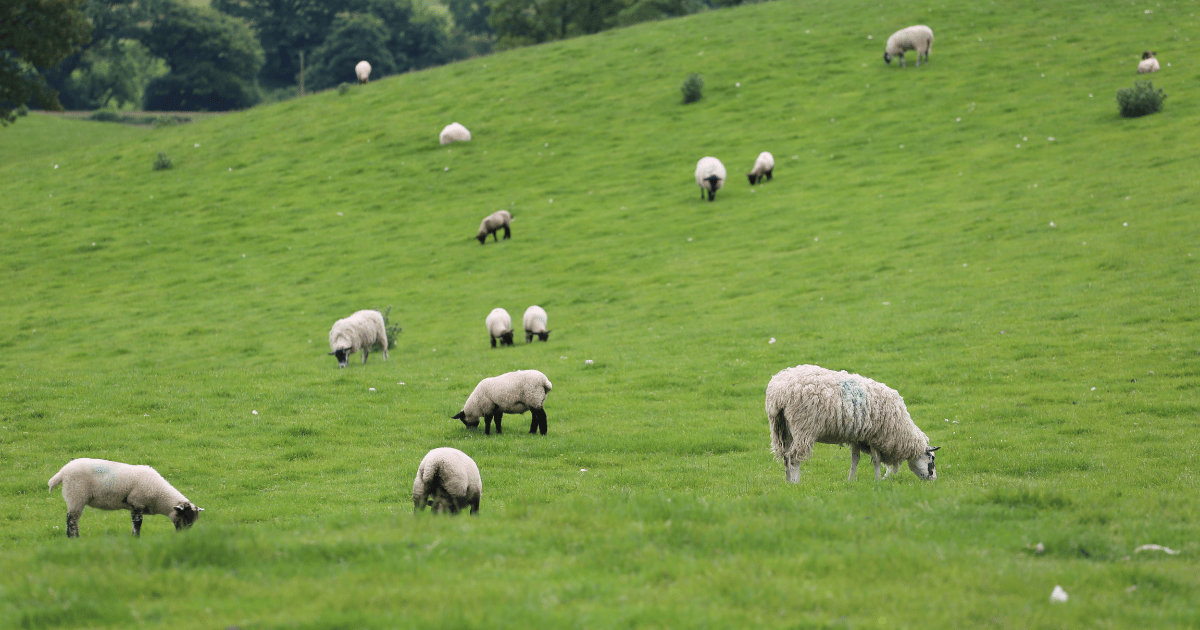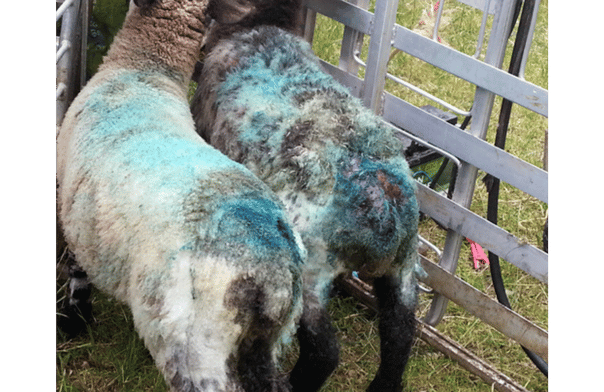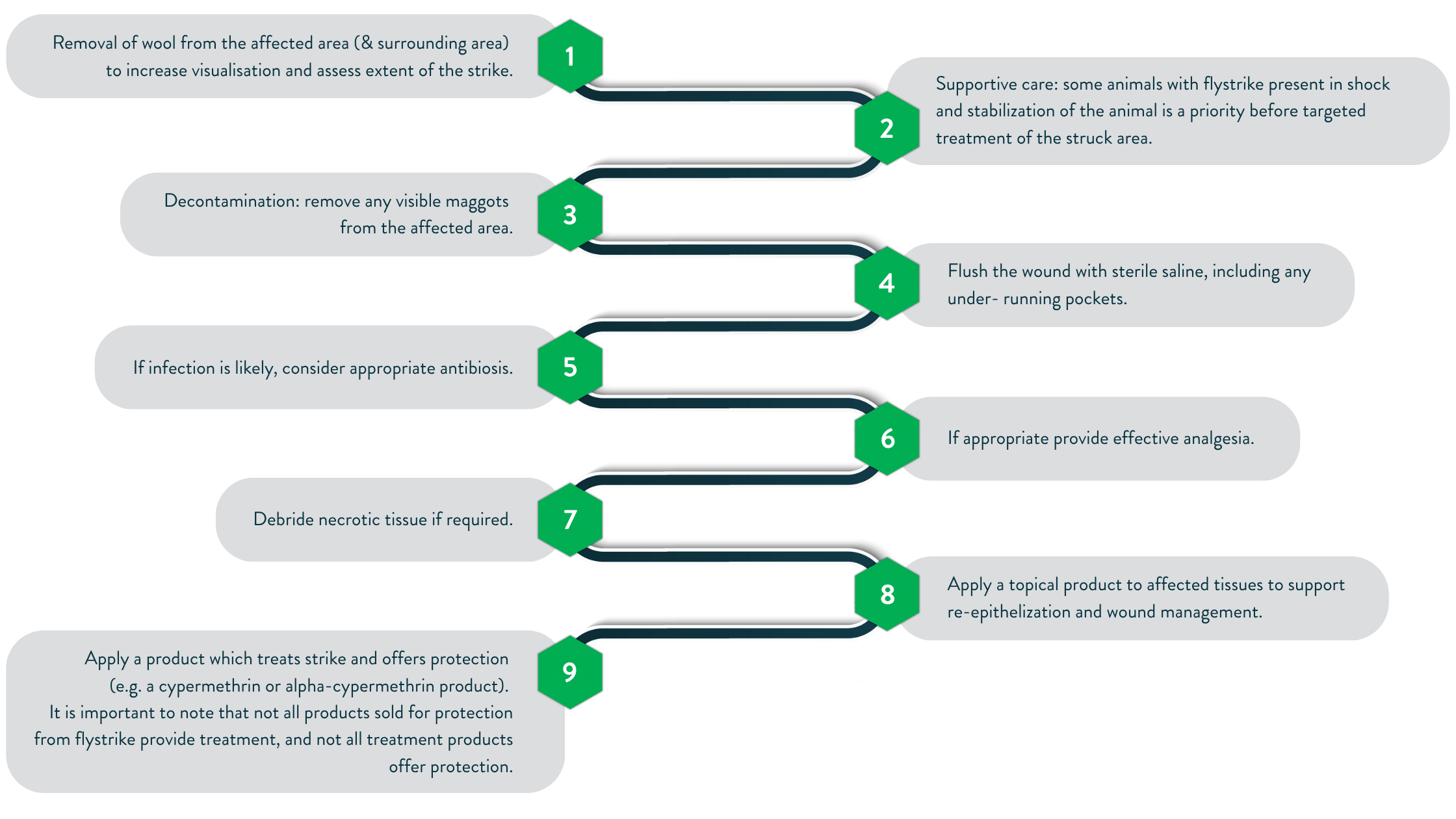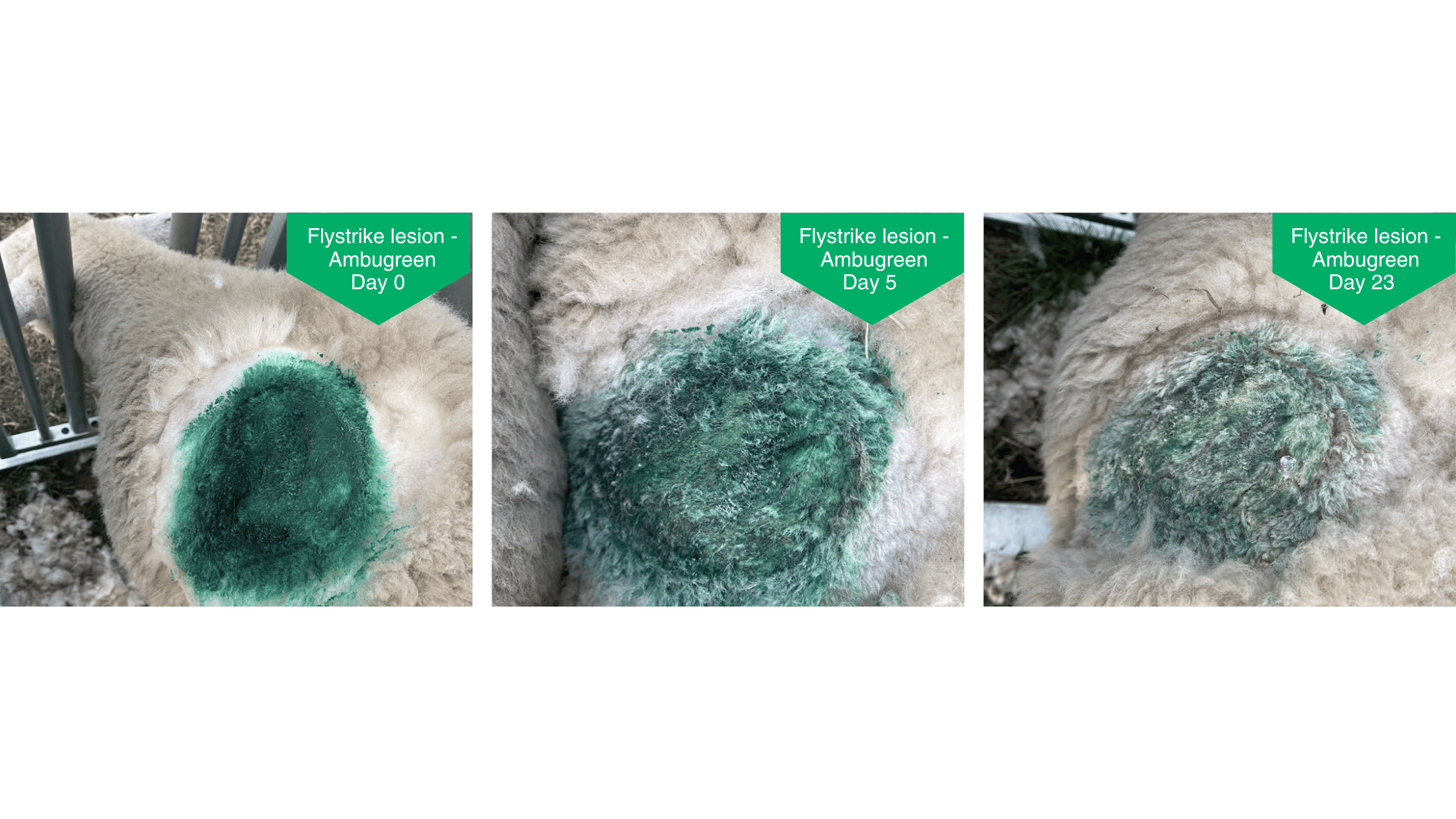

Flystrike in Sheep: Managing the Threat and Improving Recovery
Flystrike (also known as blowfly strike) remains one of the most serious and distressing conditions facing sheep in the UK. Despite widespread awareness and the use of prophylactic treatments, over 75% of UK farms report cases annually—costing the industry an estimated £2.2 million per year.
This blog post outlines the practical steps for effective flystrike treatment and highlights how modern topical gel barriers are changing the way we manage recovery on-farm.
What Causes Flystrike?
Flystrike begins when Lucilia flies (green bottles) lay eggs in soiled or moist wool, often around the tail, breech, or wounds. Once hatched, the larvae migrate to the skin and begin feeding, using enzymes and mouth hooks to break down tissue. This leads to painful wounds, rapid deterioration, and often attracts further fly egg-laying.
Clinical Signs Include:
-
Wool discolouration or matting
-
Agitation and frequent lying down
-
Foul odour from the struck area
-
Rapid weight loss and weakness
Without timely treatment, struck animals can experience toxicity, shock, and even death.

The Economical Toll
Treating flystrike isn’t just about animal welfare—it’s an economic issue too. Each case can cost up to £22 per lamb, and for a 250-ewe flock producing 375 lambs, lack of intervention could amount to losses of £3,483 per year (Lihou et al., 2023).
Best-Practice for Managing Flystrike

Why Traditional Sprays Fall Short
Many farmers rely on water-based topical antibiotics like oxytetracycline sprays. However, these are prone to wash-off in wet conditions—be it rain, urine splash, or wet grass. This leaves the wound exposed and vulnerable to further contamination and fly attack.
The Role of Gel Barrier Technology
A modern gel barrier product, like Ambugreen™, offers a new solution. It combines physical protection with a hydrophobic formulation that repels water and detritus—maintaining a cleaner environment and promoting natural healing.
Key Benefits:
-
Stays in place for over 24 hours, even in wet conditions
-
Protects against re-strike by covering exposed tissue with fly-proof barrier
-
Supports granulation and re-epithelialisation (natural healing processes)
-
Reduces need for repeat handling or reapplication
-
Can improve antimicrobial stewardship by reducing reliance on antibiotics
Farmers and vets using Ambugreen on flystrike lesions have reported improved healing outcomes over a 3-week period, even in lambs with extensive lesions.


